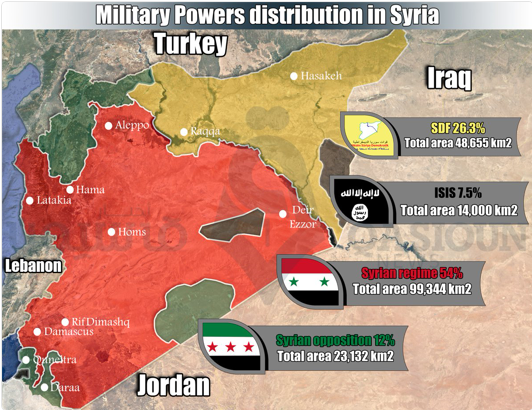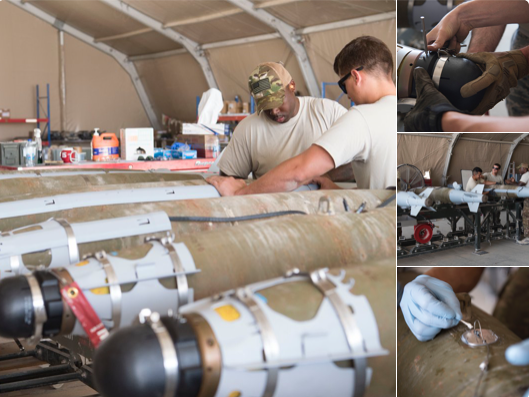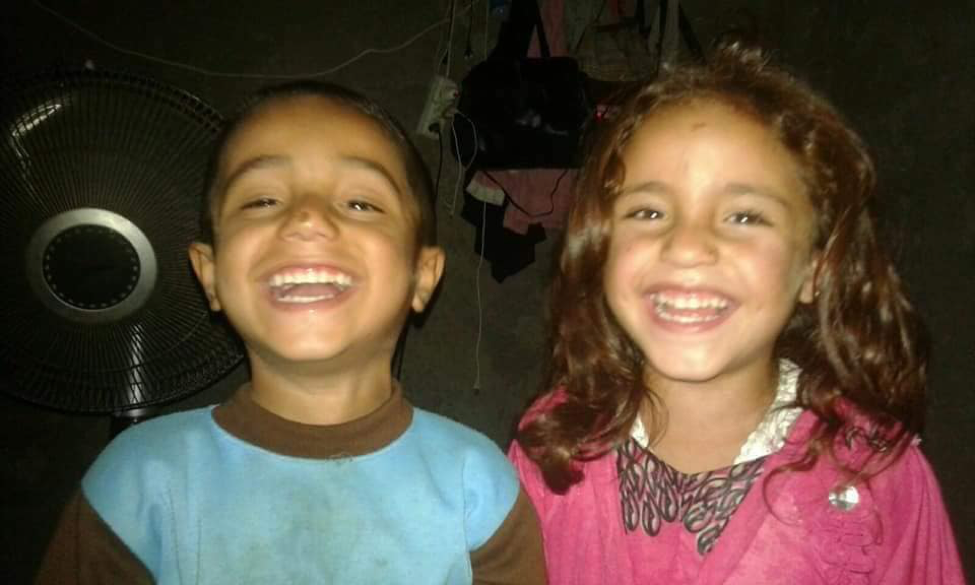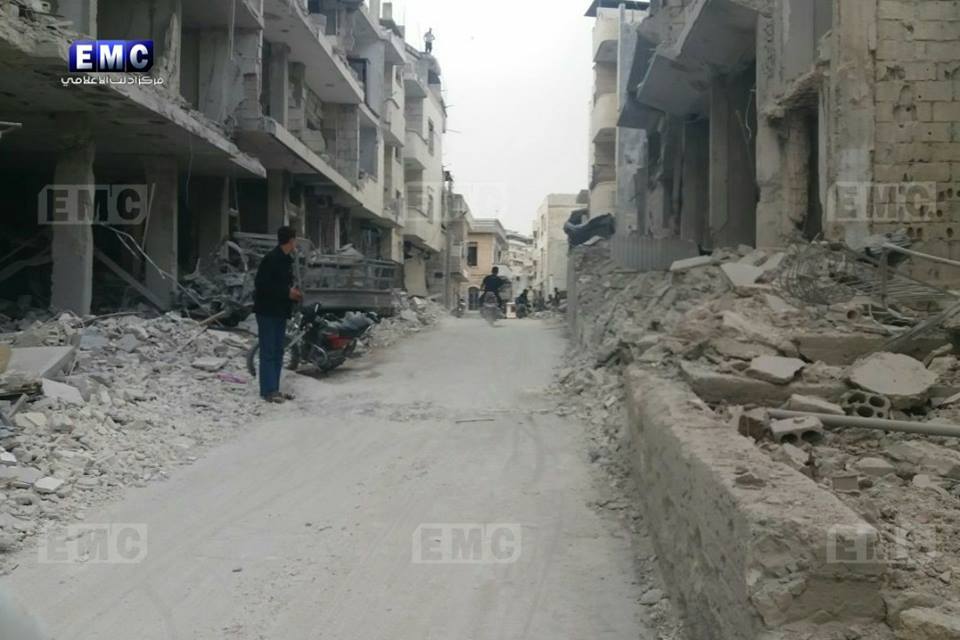Conflict monitoring
During May, civilian casualty events from alleged Russian airstrikes in Syria fell to their lowest level since the start of Moscow’s notoriously brutal bombing campaign in September 2015. Following the evacuation of civilians and fighters from Damascus to Idlib, Russia significantly scaled backs its operations. Airwars researchers tracked just 18 incidents of concern during May – with 67% of these in Idlib governorate.
However, civilians were under renewed threat elsewhere from Coalition actions. On May 1st, the US-led Coalition announced the resumption of SDF ground operations against remnant ISIS forces in northeast Syria, reporting that “over the coming weeks” it would focus on eradicating ISIS from the Iraq-Syria border, where it retained “a significant presence”. This new SDF ground offensive – dubbed ‘Operation Roundup’ – was reflected in a 164% increase in air and artillery strikes in Syria on April. The number of munitions released across both Iraq and Syria – a more reliable measure of activity than strikes – increased by 70% on April.
As a result, Airwars tracked a significant increase in incidents of concern in Syria with at least 66 civilians likely killed in May – far above the three likely deaths tracked in April. As the Coalition continued to pound remnant ISIS forces in both Deir Ezzor and Hasakah governorates, the fear was that these numbers would continue to increase.
On May 6th, Iraqi Prime Minister, Haider Al Abadi, declared additional Iraqi Air Force strikes in Syria against ISIS, this time near Al-Dashisha. Further Iraqi airstrikes on Hajin occurred on May 25th and 27th.
In a related development, Operation Inherent Resolve’s director of public affairs confirmed to Airwars that some Iraq air and artillery strikes against ISIS targets in Syria are now being counted as Coalition actions – though with Baghdad still also carrying out unilateral actions. Consequently, all recent civilian harm events allegedly involving Iraqi aircraft in Syria must now be viewed as potentially Coalition incidents.
Actions by the US-led alliance were again not restricted to ISIS. On May 11th, the Coalition reported that a “hostile force engaged with SDF artillery” – with the SDF responding in self-defense against the “unknown aggressor”. It remains unclear whether Coalition strikes assisted.
Meanwhile, tensions between Israel and Iran continued to mount. In what it said was retaliation for Iran’s alleged attack on the occupied Golan Heights, on May 10th Israel’s defence minister announced that Israeli forces had hit almost all key Iranian military targets in Syria in overnight air strikes – the largest such attacks in the country in decades.

A map showing distribution of power in Syria, published on May 24th 2018, following eight years of war (via Qasioun News Agency)
Russia in Syria: reported casualty events fall to all time low
Casualty events reportedly involving Russian aircraft in Syria during May continued to fall. In total, Airwars monitored 18 incidents of concern – a 60% decrease on the 45 events tracked during April. This was the lowest number of events tracked in any one month since the start of Russia’s intervention in Syria in September 2015. Of these 18 events, 67% were reportedly in Idlib governorate.
Between 42 and 81 civilians were alleged killed by Russian actions in total during May – compared with between 92 and 151 fatalities during April. These figures remain unvetted by Airwars, and are based on initial monitoring. They should not be compared directly with fully evaluated estimates tied to Coalition air and artillery strikes.
“Following the evacuation of civilians and fighters from Eastern Ghouta to Idlib, Russia decreased the tempo of its campaign in Syria,” says Abdulwahab Tahhan, who monitors Russian strikes “The majority of the air strikes recorded in May were in Idlib, which was supposed to be a safe haven for those evacuated from various other cities and towns in Syria. Despite recording the lowest number of civilians killed in air strikes carried out by Russia since September 2015, non combatants still remained under threat from sudden death and injury brought on by airstrikes.”
Russian incidents of concern in Syria
The worst civilian casualty events during May occurred in Idlib governorate. On May 4th, as many as six civilians including two children died in alleged Russian airstrikes on the village of Al Naqir in the southern countryside of Idlib. According to the Smart News Agency, Russian jets targeted “the village mosque and houses with cluster rockets”. Step News Agency added that dozens more civilians were wounded in this attack. All sources monitored by Airwars blamed Russia.
Only two days later on May 6th, another mosque was reportedly struck in the al Qal’a neighborhood in the middle of Jisr al Shoghour in the Idlib suburbs, according to the Syrian Network for Human Rights. The Network blamed Russia for the shelling, adding that the strikes also damaged the Rab’a al Adawiyya School. It put the death toll at four civilians including a woman.
However, other sources such as Step News said that the regime had carried out the attack, with EMC reporting that helicopters had dropped explosive barrel bombs on the town. Three fatalities were named by Jisr al Shoughour Media Centre as Anmar Sharout, Yasser Sharout and 80-year-old Mohammed Zaki (Zamzam).
On May 9th, up to 10 civilians – including women and children – died in what the Syrian Network for Human Rights referred to as a Russian strike on “a shelter-cave” in Ma’ar Zita village in the Idlib suburbs. According to the Network, five of the victims were children. It named “Mohammad Abdul Karim al Hussein, his wife and a number of his children” among those who perished. Shaam News Network provided further details, adding that the target was “an underground shelter”. EMC put the death toll as high as 10 and published an image of one of the child fatalities.
May also saw more alleged Russian airstrikes on Yarmouk Palestinian refugee camp in Damascus. On May 18th, the Smart News Agency reported that two children and four women died and more were wounded in an alleged “Russian and regime aerial bombardment”. The Syrian Network for Human Rights blamed the regime and named 85-year-old Mrs. Thahabiya Fahd Abo Rashed as one of the victims.
On May 21st, the Syrian government declared victory in Southern Damascus after retaking both Yarmouk and Hajar al-Aswad. However, by this point and after a month of fierce ground fighting, most of Yarmouk had been reportedly destroyed and its citizens displaced.

‘Mrs. Thahabiya Fahd Abo Rashed, from al Yarmouk Camp south of Damascus city, age 85, killed due to Syrian regime forces heavy bombing on al Yarmouk Camp, on May 18, 2018.’ (via SN4HR)
Coalition actions and reported civilian casualties
The known remaining active Coalition allies – the US the UK, France and the Netherlands – released 431 munitions from the air across Iraq and Syria during April 2018, according to official AFCENT data. This represented a 70% increase from April’s 254 munitions.
In Iraq, the Coalition reported just 27 air and artillery strikes in May – up slightly from 24 actions the previous month. On May 14th, Airwars tracked the first civilian harm incident in three months allegedly involving the Coalition. This occurred in Hawija and Selena villages south of Mosul in Nineveh province. Local sources said that up to five civilians were wounded; however, this was assessed as ‘contested’, with a report by Sputnik – which quoted an Iraqi security source – stating the deaths may have been caused by either the Coalition or by the Iraqi air force. In its own weekly report, the Coalition declared carrying out one strike near Qayyarah which it said destroyed an ISIS campsite.
In Syria, Coalition strikes increased by 164%. A total of 198 air and artillery strikes were declared – compared to 75 during April.
Of the still-active Coalition allies, the UK reported just two airstrikes in Syria during May – one of which was to the north west of Hajin and the other ‘in eastern Syria’: there had been none in April. Two British strikes were also reported in Iraq (down from five in April).
France reported just one strike in Syria, against an ISIS logistics building in Abu Kamal. There were no declared strikes in Iraq, though Task Force Wagram declared 73 artillery support missions in the Euphrates Valley – a 356% rise on April’s 16 missions.
The Netherlands publicly declared that weapons were deployed in five missions in Syria in May – up from just one during April. Four of these missions were carried out in Deir Ezzor governorate (of which three were near Abu Kamal), and one in Hajin.

Despite a steep drop in tempo for the battle against ISIS, the war machine remains in gear. Images showing bombs being built for F-15Es, May 17th (via US Air Force)
Coalition incidents of concern in Syria: casualty events more than double
A ramp up in Coalition activity in Syria, in support of a renewed SDF ground offensive, saw casualty events allegedly caused by US-led strikes more than double from a month earlier. Throughout May, Airwars researchers tracked 13 civilian casualty events, all but one of which were in Syria – an increase of 117% on April’s six events.
Of these events, eight were assessed as being fairly reported. An event is assessed as fair when it involves two or more uncontested and credible public sources, in addition to confirmation that the Coalition carried out strikes in the vicinity on the day. All but one of these six events occurred in Deir Ezzor governorate.
Airwars’ current estimate is that between 66 and 79 civilians likely died in these eight events – a steep rise from the three civilians judged killed by the alliance during April, when likely deaths reached an all-time low since Coalition actions began in August 2014.
“With the Coalition-backed SDF pushing hard into the last pockets of ISIS controlled villages and towns in Hassaka and Deir Ezzor provinces – and with the civilians in those places under siege – the death count is likely to continue to rise,” warns Kinda Haddad, head of Airwars’ Syrian team.
Airwars recently learned that some Iraqi air force strikes are now being classed as Coalition actions. The alliance’s director of public affairs informed Airwars by email that “if Iraqi jets are flying in a Coalition strike package, it goes on our strike logs and does count toward the Coalition tally”, while adding that “If they do a unilateral strike, it does not go in our strike log and does not count toward the Coalition tally.”
Consequently, this means that all civilian harm events allegedly involving Iraqi aircraft in Syria during May are now potential Coalition civilian casualty events.
The first such incident of this nature – and the worst event of the month – occurred on May 1st, when up to 30 civilians including 14 children and five women died in airstrikes on al Qasr village, also known as al Fadil, in Al Hassaka governorate. Reports identified both the Coalition and Iraqi air force as the likely culprit, adding that the bombing targeted al Sheikh petrol station, which housed a large number of displaced people.
Multiple members of the Al-Khashman and Al-Omar families – mostly children – were among those slain. Sound and Picture stated the strikes “came from the Iraqi side”, though the Syrian Network for Human Rights joined the majority of sources in blaming the Coalition. However, the Syrian Observatory for Human Rights emphasised that it was unclear whether the strikes were carried out by the Iraq Air Force or the Coalition. Alarmingly, Euphrates Post said that the site was targeted again during a rescue operation following the initial raid.

A photo of two children who were allegedly killed in the shelling on the village of Al Qasr (via Al Hassaka Youth Union)
The ISIS-occupied eastern Deir Ezzor town of Baghouz was particularly badly hit during May, with Airwars researchers tracking four separate events in the town. The worst of these occurred on May 10th, when local media reported that 12 civilians including three women died and dozens more were wounded in an alleged Coalition airstrike. All reports named the US-led Coalition as the culprit. According to the source Nedaa-Sy News, Coalition jets struck the town “with many rockets”. Etilaf News added that this and other strikes on “several areas east of Deir Ezzor” resulted in the displacement of 130 families in the “direction of Badia Shami”.
On May 11th, Hasaka was badly hit again, when up to eight civilians including three children and five women died in reported Coalition or Iraqi air force strikes on the village of Al Hammadi. Nine members of the Al Aziz family were named as victims. According to Hasaka Marsad, the strike hit the home of the grandfather of the children killed and was admitted by the Iraqi military. The report is however alone in identifying the Iraqi air force as the culprit. Most likely, Hasaka Marsad is basing this on a video tweeted by the Iraqi Defense Ministry allegedly showing an air strike by F16 on an ISIS HQ “in the area of Dashaisha”. Although al Hammadi is located in this general area, a specific date or a more precise location of the strike is not mentioned in the video – making it difficult to asses whether or not this is related to this incident.
Libya
Airwars launched its Libya Project on June 20th in Washington DC. The project is in partnership with the New America Foundation and assesses all known public records of airstrikes and reported civilian harm since the end of the NATO campaign in 2011.
During May, Libya experienced increased airstrike activity compared to recent months. This was mostly due to the LNA siege on Derna which was possibly supported by the UAE.
The siege led to two known civilian casualty allegations against the LNA and UAE, besides general concern for civilians trapped inside the coastal city. On May 27th, Unlimited News reported: “Activists said airstrikes late on Sunday targeted the western entrance to the city. Hours earlier, a civilian from Derna was wounded and three others were injured when a random shell fired by the Karama forces hit the East Coast neighborhood east of the city.” Other sources also reported airstrikes in the area but no civilian harm.
On May 18th, the Egyptian Air Force reportedly hit a vehicle carrying Eritrean asylum seekers near Kufra, allegedly killing three and injuring eight more. Vincent Cochetel, Special Envoy of the UNHCR for the Central Mediterranean, picked up on the reports in a tweet. Other sources, such as Libya’s Channel, published footage of the victims reportedly harmed in the incident. The event once again showed Egypt to be policing its border with Libya from the air. Its goal is to hinder extremists and smugglers from crossing the border. Similar strikes have been reported over the last months.
Despite the increase in airstrikes in May, Libya’s rival factions agreed on elections in December 2018 at a Paris summit. Given the current security situation this represents an ambitious target, which nonetheless raises hope in the country for a more peaceful future.
#Libya, air strike in Al Kufra, initial reports suggest that 3 Eritreans killed, 8 Eritreans asylum seekers wounded & treated at local hospital. Working with partners at evacuation options.
— vincent cochetel (@cochetel) May 15, 2018
Airwars advocacy
Military advocacy
The Airwars military advocacy team completed the cross-referencing of its archive against all Coalition-assessed civilian harm claims until June 2017. So far, it has identified 502 events that have not yet been reviewed by the Coalition. These are in addition to the 321 ‘open’ events listed in the Coalition’s own latest civilian casualties report.
In that same Coalition report, 159 assessments of civilian harm claims were completed. The alliance deemed only five events as credible but 149 as non-credible — including many in Raqqah during the Coalition’s campaign to liberate the city from ISIS. Airwars remains concerned at the low admittance rate of civilian harm claims in Raqqa, compared to the similar urban battle in Mosul.
European advocacy
At the start of the month, Airwars European advocacy officer Koen Kluessien featured on RTL News, after the Dutch Court of Appeal ruled in a Freedom of Information case that the Defence Ministry did not have to make public information on locations in Iraq targeted by Dutch F-16s – or on the number of civilians harmed as a result.

